Contrasting variability patterns in the default mode and sensorimotor networks balance in bipolar depression and mania
- PMID: 27071087
- PMCID: PMC4855585
- DOI: 10.1073/pnas.1517558113
Contrasting variability patterns in the default mode and sensorimotor networks balance in bipolar depression and mania
Abstract
Depressive and manic phases in bipolar disorder show opposite constellations of affective, cognitive, and psychomotor symptoms. At a neural level, these may be related to topographical disbalance between large-scale networks, such as the default mode network (DMN) and sensorimotor network (SMN). We investigated topographical patterns of variability in the resting-state signal-measured by fractional SD (fSD) of the BOLD signal-of the DMN and SMN (and other networks) in two frequency bands (Slow5 and Slow4) with their ratio and clinical correlations in depressed (n = 20), manic (n = 20), euthymic (n = 20) patients, and healthy controls (n = 40). After controlling for global signal changes, the topographical balance between the DMN and SMN, specifically in the lowest frequency band, as calculated by the Slow5 fSD DMN/SMN ratio, was significantly increased in depression, whereas the same ratio was significantly decreased in mania. Additionally, Slow5 variability was increased in the DMN and decreased in the SMN in depressed patients, whereas the opposite topographical pattern was observed in mania. Finally, the Slow5 fSD DMN/SMN ratio correlated positively with clinical scores of depressive symptoms and negatively with those of mania. Results were replicated in a smaller independent bipolar disorder sample. We demonstrated topographical abnormalities in frequency-specific resting-state variability in the balance between DMN and SMN with opposing patterns in depression and mania. The Slow5 DMN/SMN ratio was tilted toward the DMN in depression but was shifted toward the SMN in mania. The Slow5 fSD DMN/SMN pattern could constitute a state-biomarker in diagnosis and therapy.
Keywords: bipolar disorder; default mode network; neuronal variability; sensorimotor network.
Conflict of interest statement
The authors declare no conflict of interest.
Figures
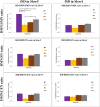
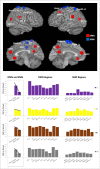
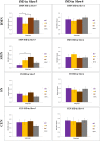
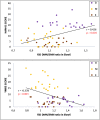


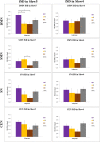

References
-
- American Psychiatrich Association (2013) Diagnostic and Statistical Manual for Mental Disorders. 5th ed. (DSM-5). (American Psychiatrich Association, Washington, DC)
-
- Kraepelin E. Clinical Psychiatry. Macmillan; New York: 1902.
-
- Northoff G. Spatiotemporal psychopathology I: No rest for the brain's resting state activity in depression? Spatiotemporal psychopathology of depressive symptoms. J Affect Disord. 2016;190:854–866. - PubMed
-
- Northoff G. Spatiotemporal Psychopathology II: How does a psychopathology of the brain's resting state look like? Spatiotemporal approach and the history of psychopathology. J Affect Disord. 2016;190:867–879. - PubMed
Publication types
MeSH terms
Substances
LinkOut - more resources
Full Text Sources
Other Literature Sources
Medical

